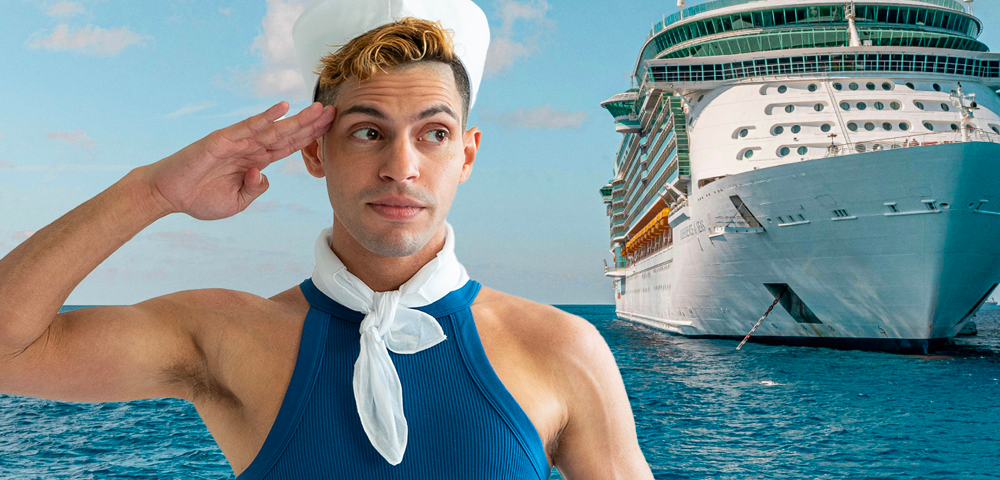
Gaydream believers
The 90s were an industrious decade for Sydney’s lesbian and gay community. Small groups of activists and entrepreneurs banded together to work on dozens of different projects. Some bore fruit -“ in 1997 Sydney won the right to host the 2002 Gay Games, and in 2000 the gay and lesbian Holocaust memorial was launched in Green Park. But other ventures -“ namely the quest to establish our own radio station and credit union -“ did not succeed.
The vision of a gay-and-Â lesbian-specific credit union probably dwindled several years ago, but it was not until late last month that its auspicing body was officially wound up. Members of the Gay and Lesbian Financial Institution Inc [GALFI] voted to return seed funding and other money to the ALSO Foundation in Victoria.
GALFI member Chris Gration told Sydney Star Observer that the organisation was established at a time when the Credit Union Services Corporation of Australia was attempting to foster credit unions within individual communities. The only two that ever eventuated -“ from the Muslim and Croatian communities -“ both had the advantage of significant private donations, he said.
The gay and lesbian credit union never made it, despite some encouraging market research, because of the prohibitive capital requirement, Gration said.
Research commissioned by GALFI in 1996 revealed that 86 percent of lesbians and gay men surveyed thought that the concept of a gay and lesbian financial institution was an excellent or good idea. Eighty-eight percent of survey respondents said they would feel comfortable using an openly gay or lesbian credit union.
But Gration contended that the case for a gay and lesbian credit union had to be compelling commercially -“ that is, competitive with the major market players -“ in order to attract the 10 to 20,000 customers required to make it viable. We cut and re-cut the business plan I don’t know how many times, he said.
The credit union dream may never have been realised, but GALFI may have helped achieve other, more lasting and important changes.
There was an incredible amount of interest from the major banks in what we were doing, Gration said. Our research, profile and activity acted as a stimulus to mainstream financial institutions to tailor their products and services to gay men and lesbians.
When the idea of the credit union was first mooted, Gration said, there was market failure -“ banks and credit unions were either not targeting gay men or lesbians, or else they were actively hostile. A similar argument could be mounted for the creation of Out FM, which commenced operations in 1997 with the aim of providing a full-time radio presence for Sydney’s lesbian, gay, bisexual and transgendered communities.
The station aired seven test broadcasts, mostly around the Mardi Gras season, the last being in 2001.
We improved with each broadcast, and in terms of quality, the seventh broadcast was the best one, said Sean Crellin, who succeeded Bev Lange as president of Out FM in 2000.
Crellin said the organisation’s membership peaked at just under a thousand in 2001, prior to the Australian Broadcasting Authority making its judgment on the allocation of three FM community licences in Sydney. Support for the station and the idea of a gay and lesbian FM radio service were helped along, he noted, by the competition between Out FM and rival community broadcaster Free FM.
Out FM’s periodic broadcasts enjoyed solid community, sponsor and technical support, Crellin said. [They were] demonstrably having a significant impact, especially on the type of people you wouldn’t normally see at dance parties, he said.
While the Australian Broadcasting Authority’s decision not to award a further AM community licence in Sydney (reported in last week’s edition of the Star) was probably the death knell for Out FM as an organisation, Crellin said that need not be the final word on lesbian and gay community broadcasting.
Out FM showed that the model of a one-month Mardi Gras broadcast was very successful, he said. There is no reason why a special events frequency couldn’t be used in future for similar broadcasts -“ although it would probably be best for Mardi Gras to do it.
While the gay credit union and the gay radio station ideas may be relegated to history, there are of course many community-specific institutions remaining (in fact, you’re reading one). But are there any lessons to be drawn from the attrition of community groups like GALFI and Out FM?
Sociologist Craig Johnston cautioned against seeing the declining number of community organisations as a sign that the community itself is in decline.
There has been a -˜shaking out’ of the ethnic/essentialist model of gay community development, he said. But there is still a strong attachment to gay community -“ it’s just not done in the same way for everyone, it’s much more diffuse. That’s a problem for organisations that don’t reinvent themselves.
There is growth or vitality in areas where you might not have seen it before, he said, citing organisations such as MAG [Mature Aged Gays], OWLS [Older Wiser Lesbians] and the Canterbury-Bankstown Social Group as three organisations which have quietly grown in membership over the years.
As an out gay man living in Darlinghurst, and being very strongly community-attached I guess, I don’t feel that there’s much of a lessening [in gay community], he said.
Perhaps the radio station and credit union proposals will be remembered as passing moments in community history -“ a time when we attempted to recreate an entire society’s worth of services and institutions. Out FM and GALFI may not have succeeded in meeting their original goals, but in their own way, they brought us closer to the sprawling, integrated, less-ghettoised community we live in today.









